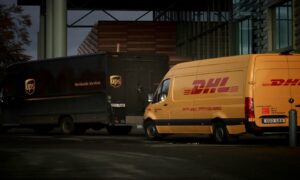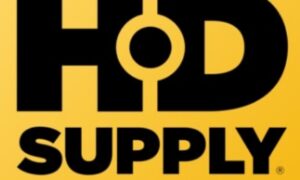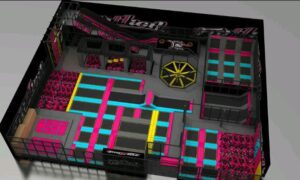In an increasingly digital world where e-commerce is booming and consumers expect faster, more reliable delivery services, logistics companies are under immense pressure to innovate. Two of the biggest names in the logistics industry in the United States, UPS (United Parcel Service) and USPS (United States Postal Service), are rising to the challenge in remarkable ways.
Both organizations have embraced advanced technology, automation, and sustainable practices to enhance efficiency and meet evolving demands. From AI-powered routing systems to digitized delivery experiences, UPS and USPS are no longer just mail and package carriers—they are now essential players in the world of smart logistics.
The Evolution of Logistics in the Tech Age
The logistics industry has come a long way from the days of paper tracking and manual sorting. With the rise of Industry 4.0, which emphasizes automation, data exchange, and smart systems, logistics companies are now integrating cutting-edge technologies like artificial intelligence (AI), machine learning (ML), IoT (Internet of Things), and robotic automation into their daily operations.
UPSers and USPS Liteblue are at different ends of the innovation spectrum—UPS being a private company with vast resources and USPS being a public institution with a mandate to serve every American. Yet both are adapting impressively to the digital age.
UPS: Leveraging AI, Automation, and Advanced Logistics
UPS has been a pioneer in leveraging AI and data analytics to transform delivery operations. One of the most notable advancements is ORION (On-Road Integrated Optimization and Navigation), an AI-powered system that analyzes vast data points to determine the most efficient delivery routes.
Key Innovations at UPS:
- ORION Technology: Saves an estimated 10 million gallons of fuel annually and reduces CO2 emissions by optimizing delivery routes.
- Automated Sorting Facilities: High-tech hubs with robotic arms and scanners that can process thousands of packages per hour.
- Drone Deliveries: Through UPS Flight Forward, UPS has received FAA approval to operate delivery drones in selected areas, primarily for medical and urgent deliveries.
- Blockchain for Tracking: UPS has invested in blockchain systems to enhance supply chain transparency and improve tracking for high-value shipments.
- Electric Vehicle (EV) Fleet: In an effort to cut carbon emissions, UPS is investing in thousands of electric delivery vehicles and sustainable practices.
These developments are not just about speed—they’re about precision, customer satisfaction, and environmental responsibility.
USPS: Reinventing Public Postal Services Through Tech
Often viewed as a more traditional organization, USPS has quietly been adopting significant technological upgrades in recent years. While their budget and operational model differ from private companies like UPS, the USPS still plays a critical role in delivering to every American address—something no private courier can match.
Notable USPS Innovations:
- LiteBlue USPS Portal: An internal online platform that enables over 600,000 USPS employees to manage schedules, access benefits, and stay informed.
- Informed Delivery: A popular USPS service that sends users digital previews of incoming mail and packages. It bridges the gap between physical and digital communication.
- Package Tracking and Notifications: USPS has upgraded its tracking systems, allowing real-time updates for customers and businesses alike.
- EV Transition Plan: USPS is set to deploy 66,000 electric delivery vehicles by 2028 as part of its green initiative.
- Automated Package Sorting Centers: Upgraded infrastructure includes high-speed sorters and scanning systems to improve delivery times and reduce errors.
USPS’s strength lies in its infrastructure and nationwide reach. The organization has over 31,000 retail locations and covers every ZIP code in the U.S.—including remote and rural areas where private carriers may not operate.
The Perfect Storm: E-commerce, COVID-19, and Changing Expectations
The COVID-19 pandemic accelerated digital transformation across nearly every industry, and logistics was no exception. USPS and UPS were both tested during the pandemic, having to scale operations rapidly, manage workforce shortages, and deal with supply chain disruptions.
What emerged was a realization: Logistics is now a frontline industry, and technology is its backbone. UPS responded with enhanced tracking tools for businesses, while USPS doubled down on contactless delivery and route optimization.
UPS and USPS: Rivals or Collaborators?
While many see UPS and USPS as competitors, the reality is more complex. In fact, UPS often partners with USPS through services like UPS SurePost, where UPS handles the first leg of delivery and USPS completes the last mile, especially in remote or hard-to-reach areas.
This public-private collaboration showcases a future where logistics companies work together to maximize efficiency and customer reach. By combining the best of both worlds—UPS’s technology and USPS’s infrastructure—they can collectively raise the standard for delivery services in the U.S.
The Future: AI, Smart Cities, and Beyond
Looking ahead, the future of logistics will be defined by:
- Smart Cities: Integrated systems where traffic lights, roads, and even sidewalks interact with delivery vehicles for maximum efficiency.
- AI-Driven Predictive Logistics: Systems that forecast demand and weather patterns to optimize deliveries before problems arise.
- Augmented Reality for Sorting and Inventory: UPS and USPS can both benefit from AR glasses that help workers scan, sort, and locate items faster.
- Robotics in Warehouses: Autonomous mobile robots (AMRs) will increasingly take over repetitive tasks in both private and public logistics hubs.
- Customer Personalization: From customized delivery times to real-time tracking, customer experience will be key.
Both UPS and USPS are investing heavily in these technologies, ensuring they remain not just relevant, but revolutionary.
Conclusion: Logistics as the Pulse of the Digital Economy
UPS and USPS, though different in structure and approach, are both vital to the U.S. economy. Their willingness to embrace technology, rethink traditional models, and collaborate where needed makes them prime examples of 21st-century logistics evolution.
As e-commerce, automation, and customer expectations continue to rise, the organizations that will thrive are those who adapt quickly, stay transparent, and think smart. UPS – https://up-sers.com and USPS – https://i-liteblue.us are not just keeping up—they’re leading the charge into a new era of delivery.

































